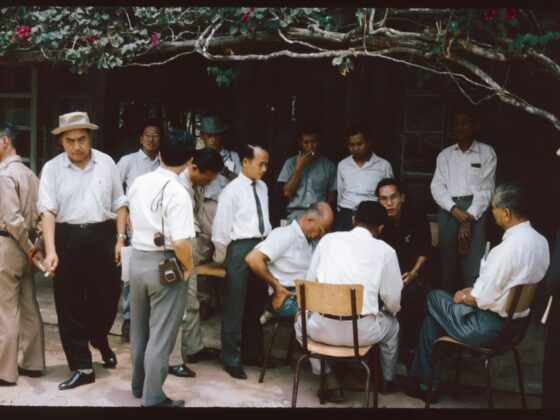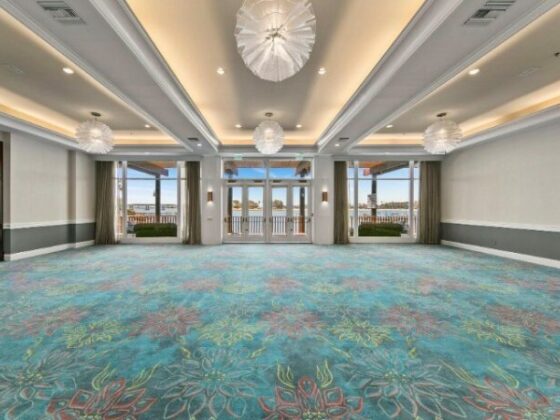
How does Optical LAN enable or enhance Wi-Fi 7 in hotels?
Wi-Fi 7 is the next step for the hospitality IT sector. It addresses the growing demand for high-speed, reliable, and low-latency wireless connectivity, all of which are now essential for delivering exceptional guest experience and efficient hotel operations. However, to fully leverage the capabilities of Wi-Fi 7, it is not enough to upgrade only the access point. The backhaul network, which carries the traffic from Wi-Fi points further in the network, must also be capable of handling the increased traffic. Without a high-capacity backhaul, network bottlenecks can occur, undermining the benefits of investing in Wi-Fi 7.
For hotels that are currently using CAT cabling, that typically means the replacement of the entire cabling infrastructure and probably also switches. It is a huge and disruptive work, and even when completed, it will require again changes in cabling when a new generation of Wi-Fi arrives.
Optical LAN (OLAN), on the other hand, is based on optical fiber cabling – that has unlimited capacity. Today OLAN solutions provide up to 25Gb/s capacity, 50Gb/s is coming soon, and even 100Gb/s has been successfully tested. That means that once fiber is deployed- it never has to be touched again.
Here’s how OLAN specifically enables or enhances Wi-Fi 7 deployments, and how it offers distinct advantages over copper-based infrastructure:
- Massive Bandwidth Support
- Fiber has very low latency and jitter, which are essential for Industry 4.0 applications
- Centralized architecture, which is also simpler and occupies less space
- Power efficiency with reduced power consumption and cooling needs
- Future proof
The cost of upgrading network infrastructure is a major concern. What are the cost savings hotels can expect when implementing Optical LAN compared to a traditional network overhaul?
Nokia and its partners did a total cost of ownership (TCO) study for hospitality segment.
Assumptions:
- Building: 30 floors, 600 rooms & 600 Wi-Fi access points
- 5 years TCO comparing Traditional LAN vs Optical LAN
- Optical LAN delivers
- Total cost of ownership savings over 5 years is 55%
- This includes operational savings, for example:
- Space savings = 96%
- Power savings = 42%
For added reference, please see this Nokia article on the benefits of Optical LAN.
“Future-proofing” is a key claim for Optical LAN. How will Optical LAN support emerging technologies and bandwidth-intensive applications in hotels over the next 10-20 years?
One of the biggest advantages of fiber is that it allows for capacity to be increased in an extremely efficient manner by adding new wavelengths that run at higher speeds. For example, IT operators can start with Gigabit LAN, and when the need arises, they can add 10Gb/s wavelength or 25Gb/s wavelength, etc. They can also do it over the existing cables and switches.
Next-gen services in hospitality will enable immersive experiences to guests, for example: concurrent high throughput streams, AR/VR for entertainment or business conferences, virtual room previews, virtual tour guides, etc. In addition, there is a trend towards Smart Hotels with advanced IoT, which will require the collection of huge amounts of data from the hotel campus to automate processes and/or conduct predictive maintenance for security cameras, smart bins, energy management, personalized room experiences, and more. This will require an infrastructure capable of transmitting a high amount of data, and fiber is the only way hotels can be ready for whatever comes.
What are some of the physical footprint reduction and power consumption benefits of Optical LAN compared to traditional networking equipment?
One of the most compelling advantages of OLAN over traditional copper-based networking is the dramatic reduction in both physical footprint and power consumption. These benefits are especially valuable in space-constrained, cost-sensitive environments like hotels, where maximizing usable space and minimizing operational costs are key priorities.
Traditional copper LANs require a telecom closet/cabinet roughly every 50-100 meters due to copper’s distance limitations and switch capacity which typically connect 24 access points. In contrast, fiber support distances of 20km, and fiber optical switches can connect >1000 points, so operators need only one fiber optical switch to cover the entire campus or building.
OLAN also needs less cables (on average 70% less). For example, the photo below shows a copper cables bundle versus fiber bundle. That results in: less space and weight (especially important if the cabling runs in-ceiling), less installation effort and no cable congestion. This brings another benefit: because they are so small in size, when operators introduce optical fiber cables, they can simply add them without needing to rip off copper cables, reducing cost, effort and dust.
Regarding energy consumption, optical fiber is the most energy-efficient technology (compared to copper or wireless). The transmission is very efficient, but with OLAN there is also less equipment, powering and cooling needed, resulting in 40% less energy consumption compared to traditional LAN.
What are the typical challenges or considerations a hotel’s IT department might face when transitioning from a traditional network to an Optical LAN system?
One of the biggest challenges is that it is new, so not everyone in the hospitality segment is familiar with the technology and how to deploy it. However, fiber has become a global trend; the industry has accumulated extensive expertise in deploying fiber, it is today a simple plug-and-play that makes it easy for enterprises. For example, one of our partners deploying OLAN in LATAM and Asia has developed a technique that enables them to wire a hotel room with optical fiber in less than 30 minutes.
For hotels with existing significant investments in copper infrastructure, what is the recommended approach for a phased or hybrid deployment of Optical LAN? Are there scenarios where a gradual integration makes more sense than a complete rip-and-replace?
Actually, it is possible to avoid rip-and-replace because fiber is very thin and instead run fiber cabling along the wall (close to floor or ceiling). This is attractive for hotels in historical buildings allowing them to preserve the original building features.
But even in the replacement scenario, there are possibilities to do it gradually. That would start with the vertical cabling to reach every floor with fiber and terminate the fiber on each floor with high density optical modem that can leverage existing copper cabling to connect devices. This is done with very little disruption. From this point, hotels can gradually extend fiber on every floor or even part of the floor.







